This is the big week so many of us in the northern hemisphere have been waiting for. Comet C/2011 L4 PANSTARRS, which has put on a splendid show in the southern hemisphere, now finally comes to a sky near us northerners!
Sky watchers in Australia and southern South America report it looks like a fuzzy star a little brighter than those in the Big Dipper with a short stub of a tail visible to the naked eye. The comet should brighten further as it wings its way sunward. Closest approach to the sun happens on March 10 at a distance of 28 million miles. That’s about 8 million miles closer than the orbit of Mercury.
Though very low in the western sky after sundown, the comet should be visible across much of the U.S., southern Canada and Europe beginning tonight March 8.
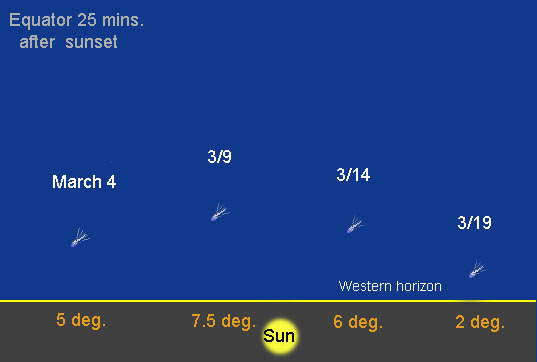
PANSTARRS’ low altitude presents a few challenges. Approaching clouds, general haziness and the extra thickness of the atmosphere near the horizon absorbs the comet’s light, causing it to appear fainter than you’d expect. A casual sky watcher may not even notice its presence. That’s why I recommend bringing along a pair of binoculars and using the map that best fits your latitude. Find a place with a wide open view to the west, focus your binoculars on the most distant object you can find (clouds are ideal) and then slowly sweep back and forth across the sky low above the western horizon
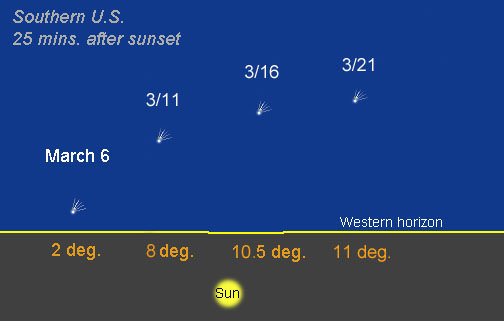
As the nights pass, PANSTARRS rises higher in the sky and becomes easier to spot for northern hemisphere observers while disappearing from view in the south. On the 12th, a thin lunar crescent will shine just to the right of the comet. Not only will it make finding this fuzzy visitor easy-peasy, but you’ll have the opportunity to make a beautiful photograph.
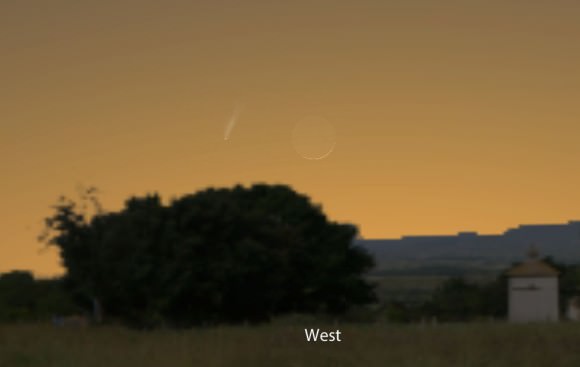
The maps shows the arc of the comet across the western sky in the coming two weeks for three different latitudes. Along the bottom of each map is the comet’s altitude in degrees for the four labeled dates. The sun, which is below the horizon, but whose bright glow you’ll see above its setting point, will help you determine exactly in what direction to look.
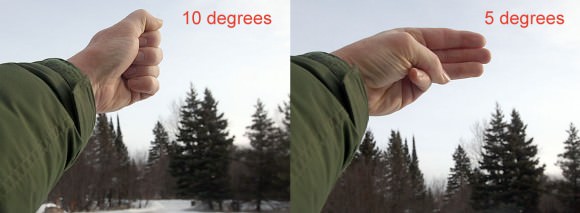
A word about altitude. Astronomers measure it in degrees. One degree is the width of your little finger held at arm’s length against the sky. Believe it or not, this covers two full moon’s worth of sky. Three fingers at arm’s length equals 5 degrees or the separation between the two stars at the end of the bowl of the Big Dipper. A fist is 10 degrees. This weekend PANSTARRS will be 2-3 “fingers” high around 25 minutes after sunset when the sky is dark enough to go for it.
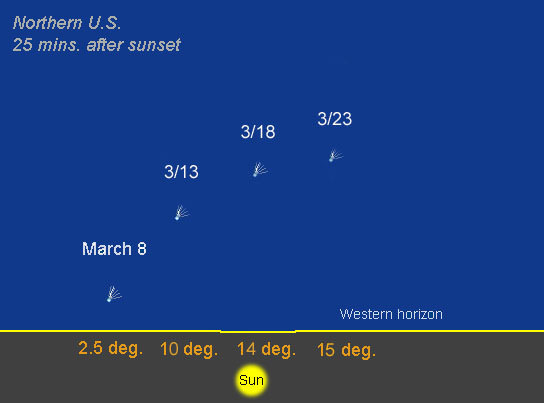
To find PANSTARRS, locate it on the map for a particular date, note its approximate altitude and relation to where the sun set and look in that direction. Assuming your sky to the west is wide open and clear, you should see a comet staring back. If you don’t find it one night, don’t give up. Go out the next clear night and try again. While Comet PANSTARRS will fade over the next few weeks, it will also rise higher into a darker sky and become – for a time – easier to see. I also encourage you to take out your telescope for a look. You’ll see more color in the comet’s head, details in its tail and an intensely bright nucleus (center of the comet), a sign of how fiercely sunlight and solar heating are beating up on this tender object.
Sound good? Great – now have at it!

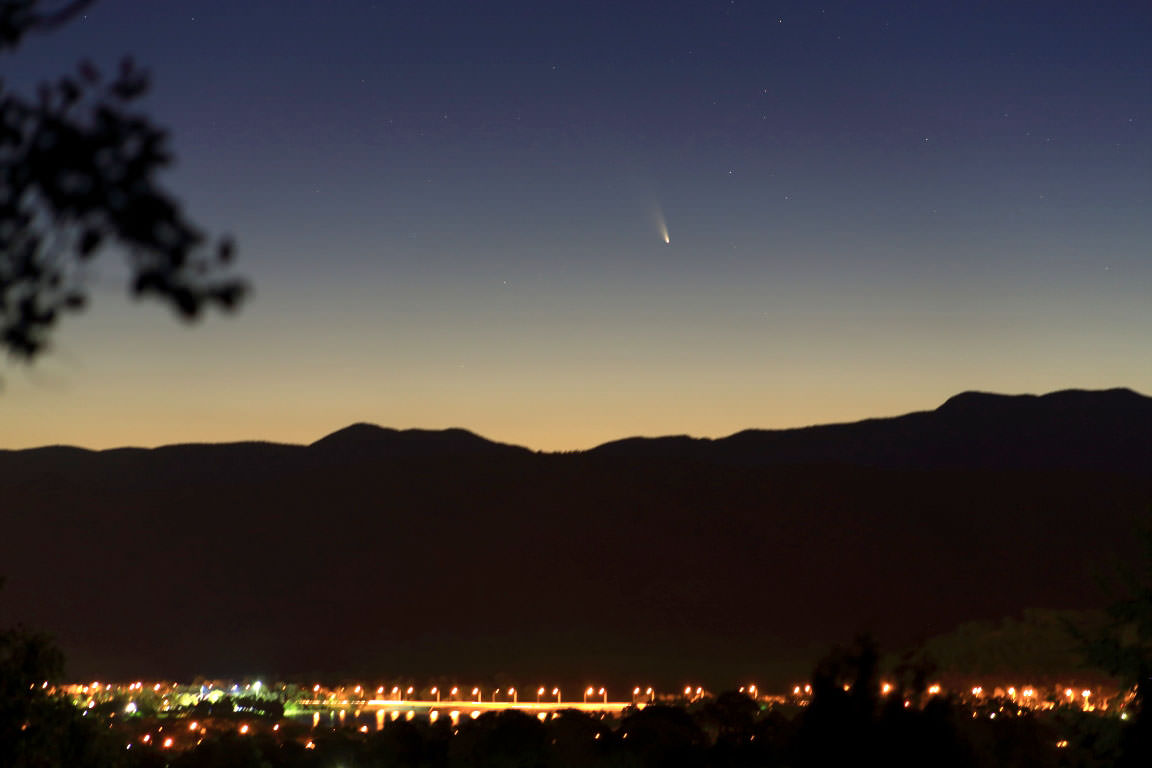
“Sky watchers in Australia and southern South America report it looks like a fuzzy star a little brighter than those in the Big Dipper”
Holy mismatched hemispherical references, Batman!
That is so cool never seen this before .
Hope every one gets to see this .
SO cool !!!!!!!!!!!!!!!!
Thomas – Very true – but! I was seeking a convenient comparison for northern folks who might only be familiar with that constellation.
Tried viewing it tonight ..3/8..but no luck.
I saw it this evening (March 9) from Salisbury NC (latitude +35). Amazing!
Great webpage. Just what I was searching for. Thanks a lot.
Is the change in the direction of the tail from the South (photos) to the North (maps) due to the comet being on different sides of the Sun?
So in alabama amd cant see a thing even after watching the sun set and waiting over an hour. Any explanation?
Lucked out with some great skies last night in New Mexico, and was able to string together a pretty decent timelapse:
http://jeffwarnerphoto.com/2013/03/12/31213-comet-pan-starrs-and-crescent-moon/
Hoping for clear skies for you all to be able to view it!